
Hola comunidad, esta es mi primera publicación y la hago con muchísimo amor y muchísima alegría. Debo confesar que dudé un poco en publicar porque no sé si estoy cumpliendo con las normas de la comunidad. Si hay algo que está fuera de lugar, le pido a los curadores que me lo hagan saber para corregir en el futuro. Sin embargo, gracias por permitirme ser parte de este espacio y poder compartir con ustedes mi interés por la comida y lo que ella genera en mi ser.

La arepa es mucho más que un simple alimento. Para mí, significa hogar, familia y esos momentos imborrables que nos llenan el alma. Es esa esencia intangible que nos dibuja sonrisas y, a veces, sin querer, nos humedece los ojos. Para mi generación, y las anteriores, la arepa es sinónimo de domingos en la mesa familiar, de ese aroma inolvidable a las 5:30 de la mañana, cuando mamá o la abuela estaban en la cocina preparando el desayuno. Es el recuerdo de pararte en una arepera a las 3 de la mañana, después de una noche de baile, para compartir risas con amigos.
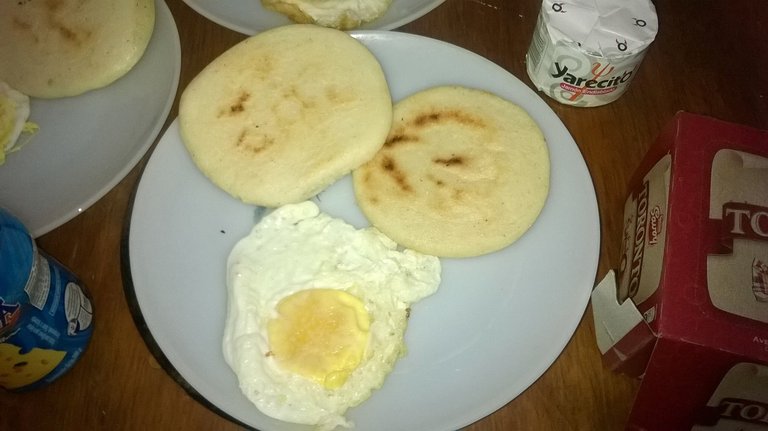
Hablar de arepas es hablar de su versatilidad. Dependiendo de la región de Venezuela, pueden rellenarse con ingredientes muy variados y, muchas veces, propios de cada zona. Hay arepas con lengua en vinagreta, chorizo de ajo, mollejas, queso guayanés o cuajada. También se rellenan con atún a la vinagreta, ensaladas frescas, e incluso carnes condimentadas. Las que yo preparé son de carne mechada con queso: carne de res hervida, desmenuzada en finas hebras, bien condimentada y acompañada de queso amarillo o blanco rallado. También puedes encontrar opciones como pollo desmenuzado con pimentón, cebolla y ajo; salchichas en salsa rosada (mayonesa con ketchup); o la clásica ensalada rallada de repollo blanco, repollo morado y zanahoria con mayonesa. Para quienes prefieren lo más simple, una arepa de jamón y queso o incluso solo de queso son opciones deliciosas y llenas de sabor.

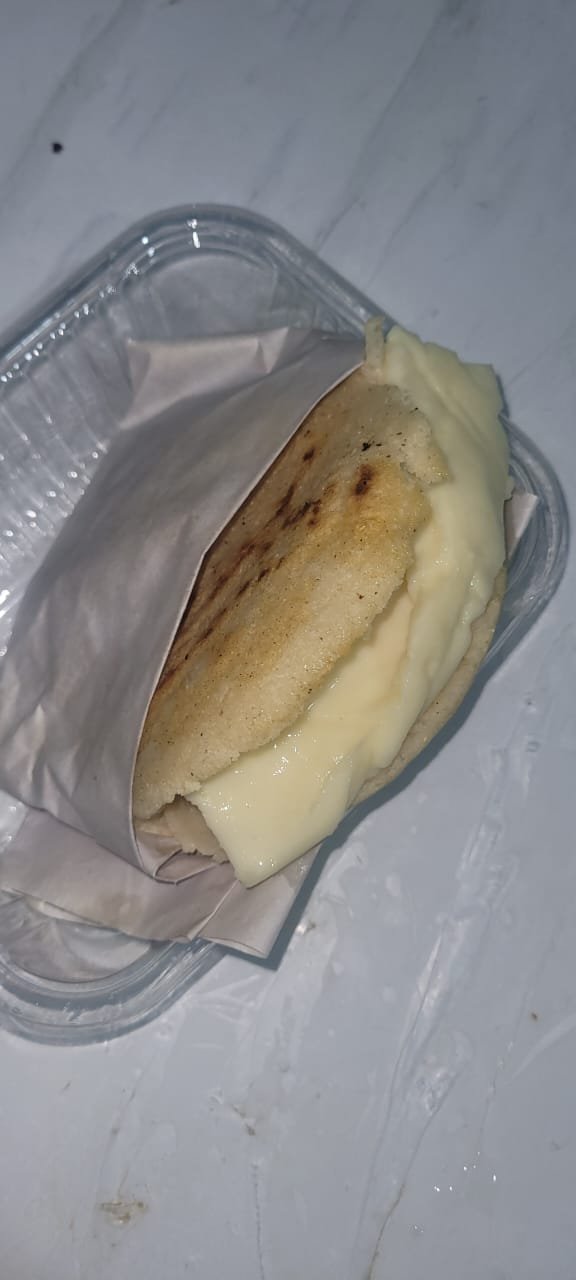
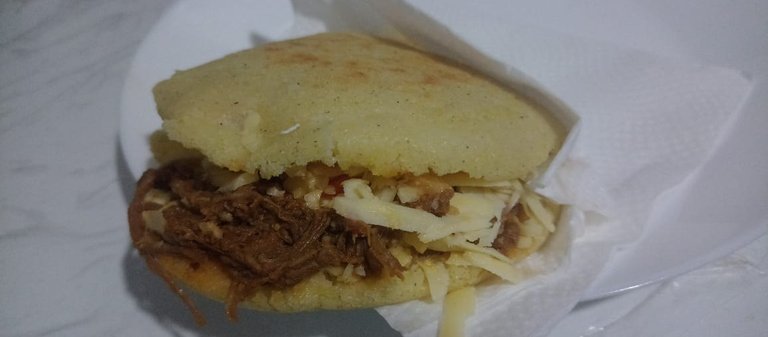
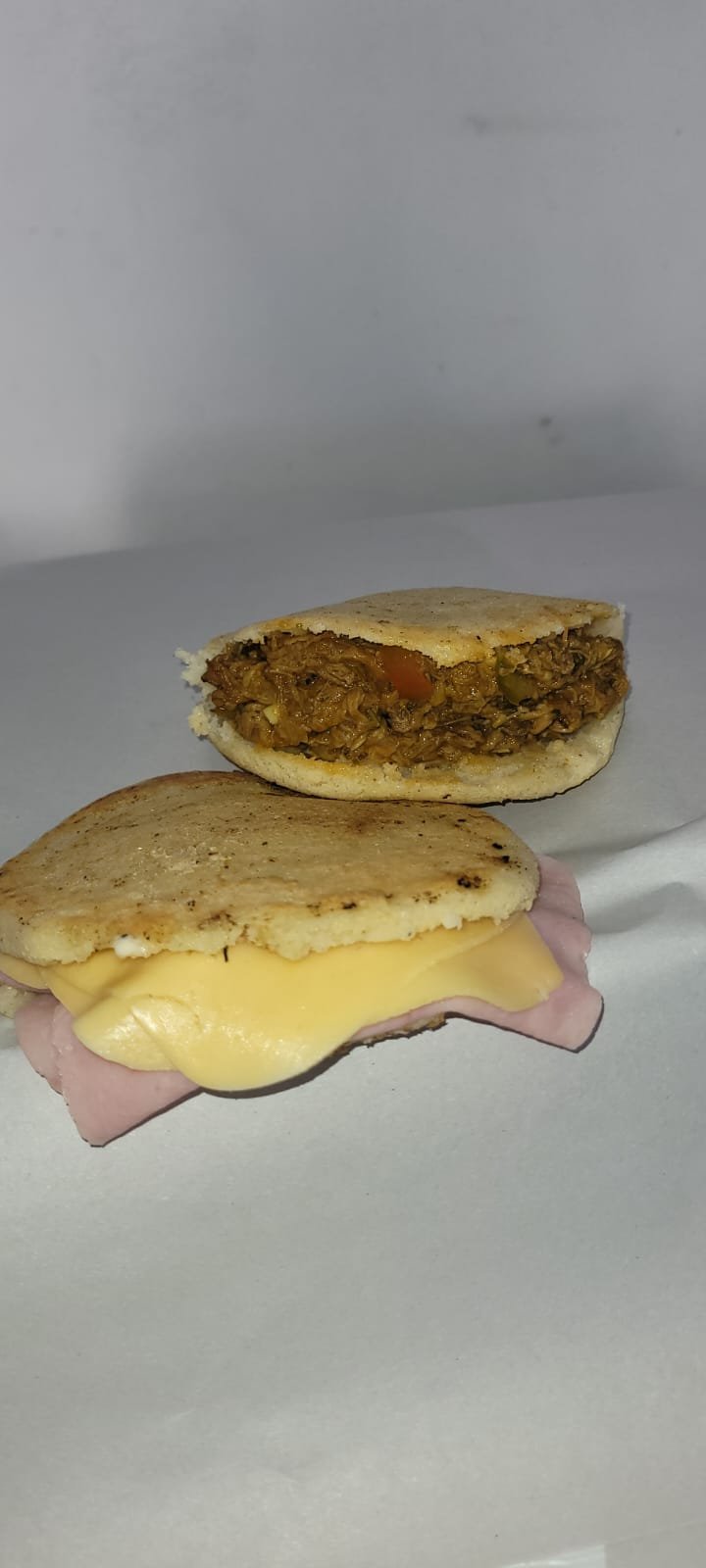
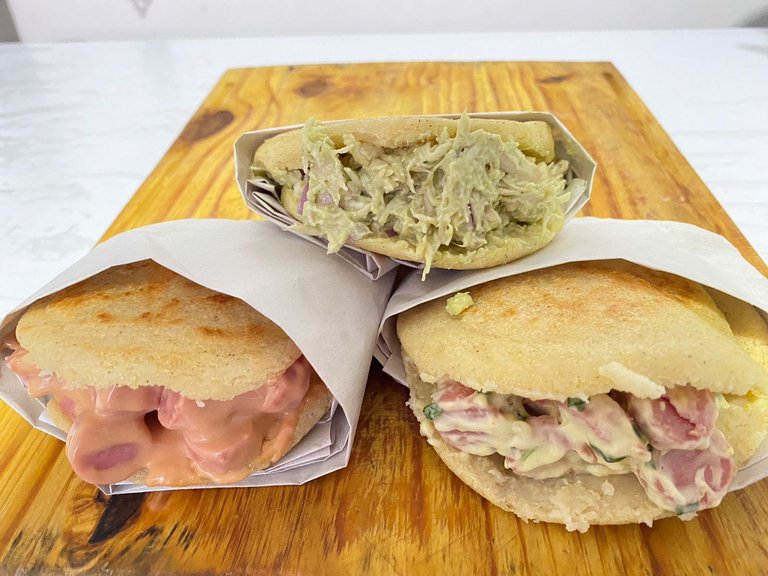
Uno de los secretos de las arepas es la harina de maíz precocida, que hace toda la diferencia. No se pueden hacer con cualquier tipo de harina de maíz, ya que esta debe estar precocida para lograr la textura ideal: suave por dentro y ligeramente crujiente por fuera. Es esta harina la que le da a la arepa su esencia única, permitiendo que se amase con facilidad y se cocine de manera uniforme. Entre las opciones más populares está la harina P.A.N., un emblema venezolano que ofrece variedades como maíz blanco, amarillo, integral o incluso mezclas extra suaves que combinan maíz blanco y arroz. Sin embargo, en Argentina, se ha popularizado una marca llamada Morixe, que es la que conseguí y con la que preparé mis arepas. Saber que puedo encontrarla fácilmente me da una sensación de cercanía y me recuerda que, incluso lejos de casa, siempre puedo conectar con mis raíces.
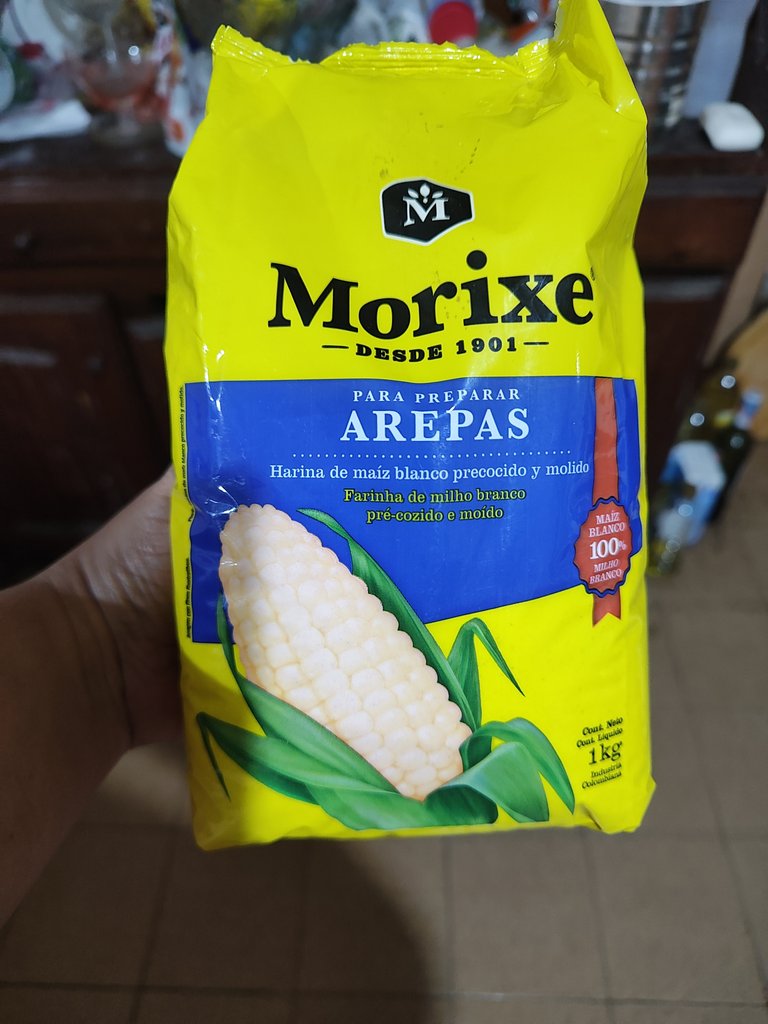
La arepa no es solo parte de la gastronomía venezolana; es parte de nuestra esencia, de lo que nos define como venezolanos. Un alimento circular y sencillo, hecho con solo tres ingredientes —agua, harina y sal—, pero cargado de tanto simbolismo. Representa nuestra capacidad de adaptarnos a cualquier circunstancia, nuestra resiliencia y la creatividad que llevamos en el alma. Porque, así como la arepa se llena con lo que quieras (menos dulce, por favor), nosotros los venezolanos somos versátiles y echados para adelante, llenos de orgullo por lo que hacemos, simples pero cumplidores, fascinantes y originales.

Vivir lejos de mi tierra, a 10,000 kilómetros, podría haberme alejado de esa conexión, pero no. Qué mágico es entrar a un establecimiento comercial en un barrio de la zona norte de Buenos Aires y encontrar mi harina, ahí, esperándome. Saber que un producto tan nuestro está en una góndola extranjera me llena de emoción y gratitud. Ese paquete de harina no es solo un producto; es un puente a mis raíces, un recordatorio de cómo hemos llevado nuestra cultura y nuestra esencia a cada rincón del mundo.
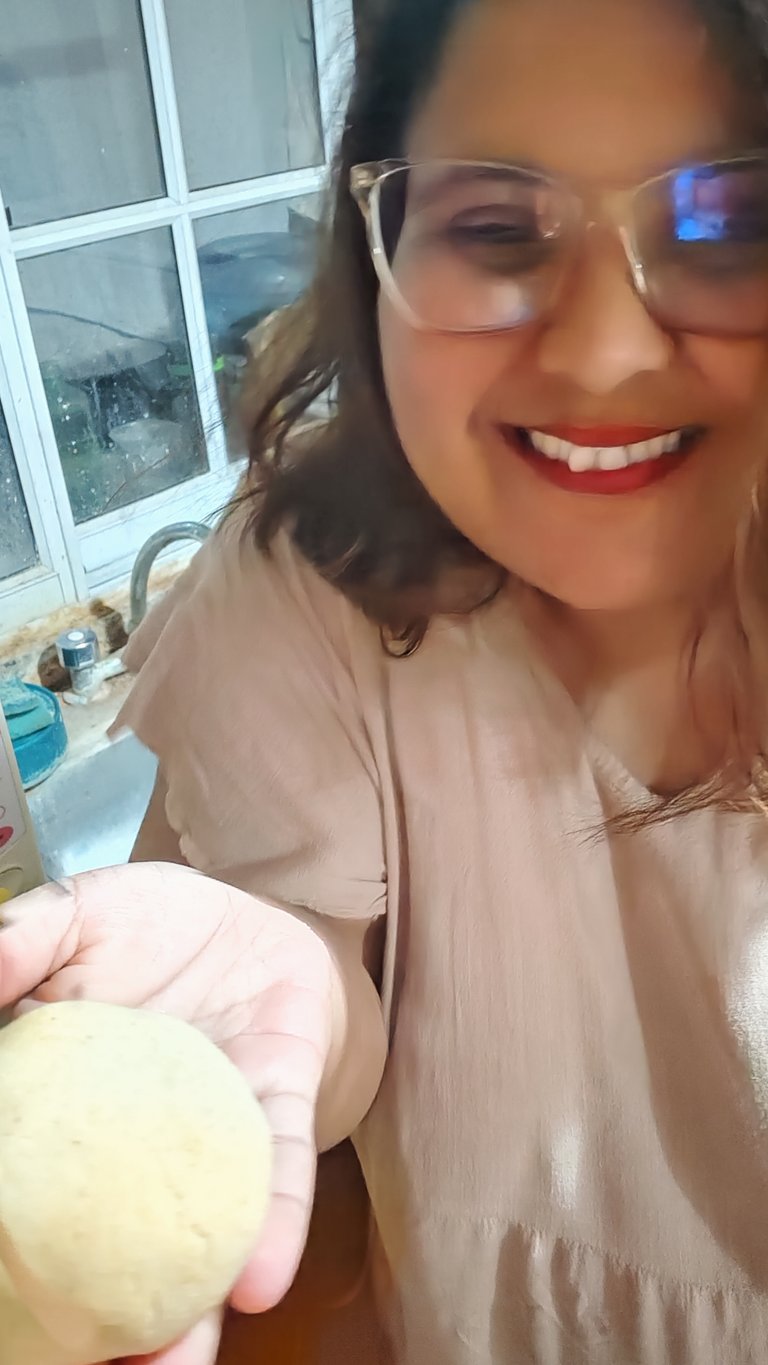
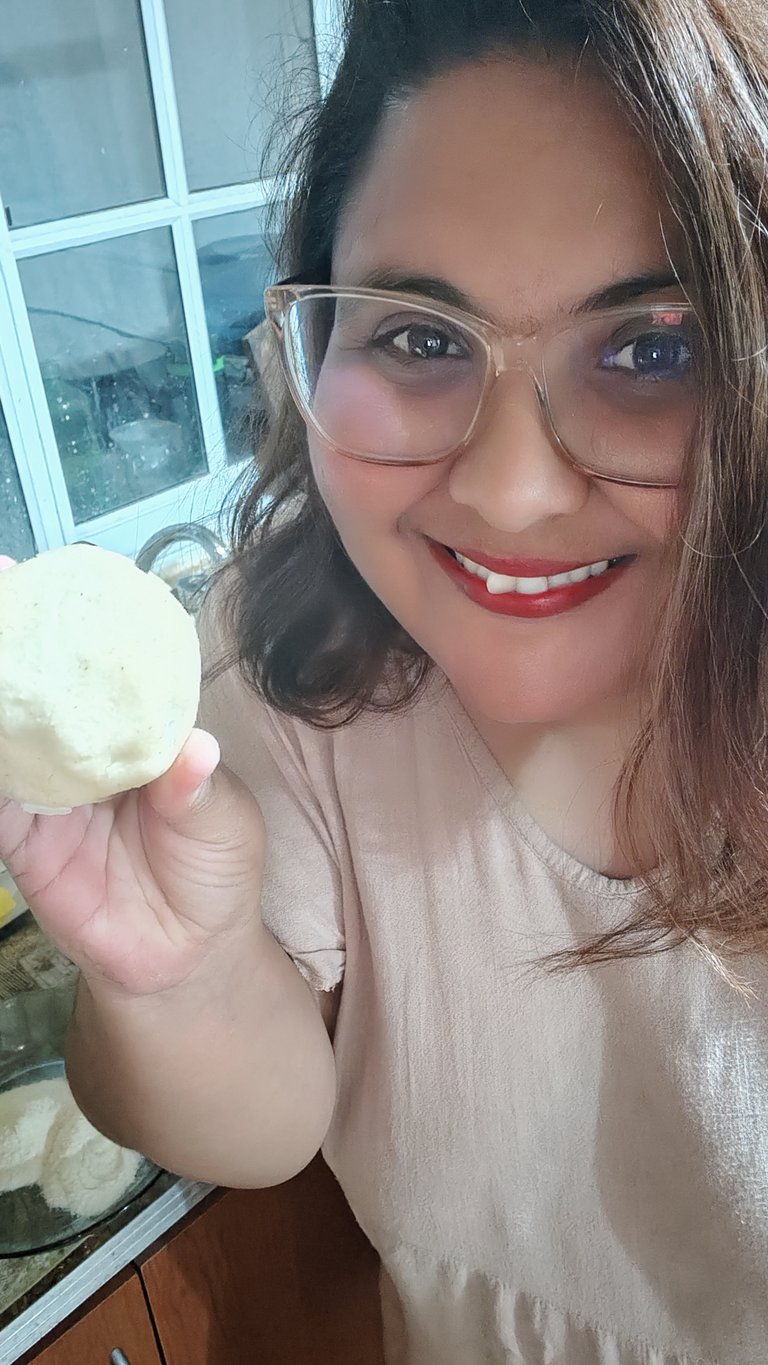
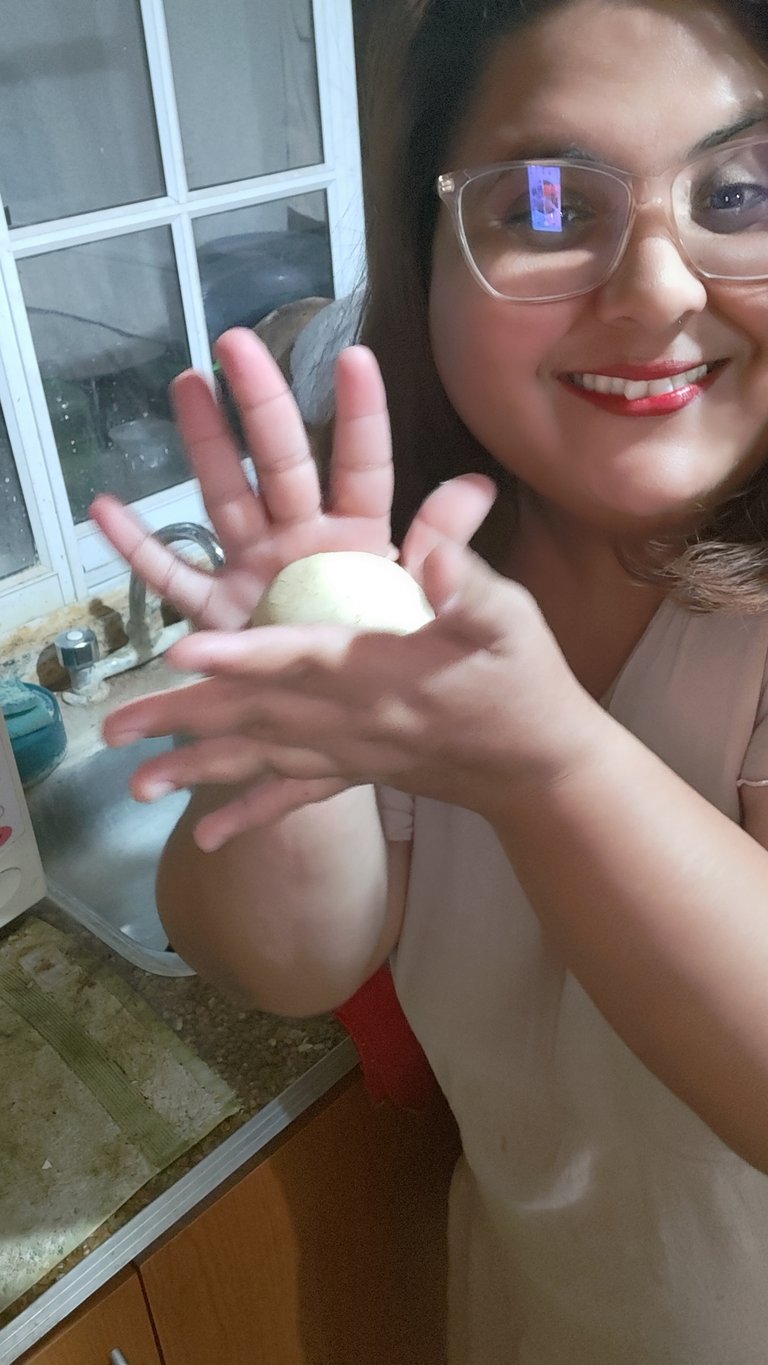
Ver esa harina en la despensa de un lugar tan lejos de casa me hace sentir que, a pesar del éxodo, Venezuela ha crecido y se ha expandido con nosotros. Que nuestras costumbres, nuestra gastronomía y nuestra tricolor se han arraigado en el corazón de tantos lugares. Y eso, para mí, es el verdadero significado de la arepa: un símbolo de nuestras raíces profundas, de quiénes somos, de dónde venimos y de todo lo que podemos ser, sin importar dónde estemos.


Hello, community! This is my first post, and I’m sharing it with so much love and joy. I must confess that I hesitated a bit before publishing because I’m not sure if I’m fully adhering to the community guidelines. If there’s anything out of place, I kindly ask the curators to let me know so I can improve in the future. However, I’m deeply grateful for the opportunity to be part of this space and to share my passion for food and the emotions it stirs within me.

The arepa is much more than just food. For me, it represents home, family, and those unforgettable moments that fill our souls. It’s that intangible essence that brings smiles to our faces and sometimes, unexpectedly, tears to our eyes. For my generation and the ones before, the arepa is synonymous with Sunday family breakfasts, with that unforgettable aroma at 5:30 a.m. when mom or grandma would prepare it for school mornings. It’s the memory of stopping at an arepera at 3 a.m. after a night of dancing, sharing laughter with friends.

Talking about arepas means talking about their versatility. Depending on the region of Venezuela, they can be filled with a wide variety of ingredients, often unique to each area. There are arepas filled with tongue in vinaigrette, garlic sausage, chicken gizzards, queso guayanés, or cuajada. Others are stuffed with tuna in vinaigrette, fresh salads, or even seasoned meats. The ones I made were filled with shredded beef and cheese: boiled, shredded beef, seasoned to perfection, and paired with grated yellow or white cheese. I also made some with shredded chicken, cooked with bell peppers, onions, and garlic; sausages in pink sauce (mayonnaise and ketchup); and others with sausages mixed with mayonnaise, garlic, and finely chopped fresh parsley. Of course, I couldn’t skip the classic coleslaw-style salad arepas, with white cabbage, purple cabbage, onions, and mayonnaise. For those who prefer simplicity, I prepared ham and cheese arepas, and even plain cheese ones. Each one was delicious, filled with flavor, and lovingly made by me.





One of the secrets to making perfect arepas lies in the precooked cornmeal, which makes all the difference. You can’t use just any cornmeal—it must be precooked to achieve the ideal texture: soft on the inside and slightly crispy on the outside. This type of flour gives the arepa its unique essence, making it easy to knead and ensuring it cooks evenly. Among the most popular options is harina P.A.N., a Venezuelan staple that offers varieties like white corn, yellow corn, whole grain, or even extra-soft mixes that combine white corn and rice. However, in Argentina, a brand called Morixe has become popular, and that’s the one I found and used to prepare my arepas. Being able to find it so easily gives me a sense of closeness and reminds me that, even far from home, I can always reconnect with my roots.

The arepa is not only part of Venezuelan gastronomy; it is part of our essence, of what defines us as Venezuelans. A circular and simple food, made with only three ingredients -water, flour and salt-, but loaded with so much symbolism. It represents our ability to adapt to any circumstance, our resilience and the creativity we carry in our soul. Because, just as the arepa can be filled with whatever you want (less sweet, please), Venezuelans are versatile and forward-looking, full of pride in what we do, simple but reliable, fascinating and original.

Living 10,000 kilometers away from my homeland could have taken me away from that connection, but no. I was not. How magical it is to enter a commercial establishment in a neighborhood in the northern area of Buenos Aires and find my flour, there, waiting for me. Knowing that a product so much ours is in a foreign gondola fills me with emotion and gratitude. That package of flour is not just a product; it is a bridge to my roots, a reminder of how we have taken our culture and our essence to every corner of the world.



Seeing that flour in the pantry of a place so far from home makes me feel that, despite the exodus, Venezuela has grown and expanded with us. That our customs, our gastronomy and our tricolor have taken root in the hearts of so many places. And that, to me, is the true meaning of the arepa: a symbol of our deep roots, of who we are, where we come from and all that we can be, no matter where we are.
Foto/Photo by: @esperanzalandia
Edición/Edited by @esperanzalandia
Diseño de portada / Cover Design by Canva
Traducido con/ Translated with: Deepl
Posted Using InLeo Alpha


